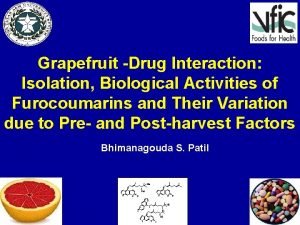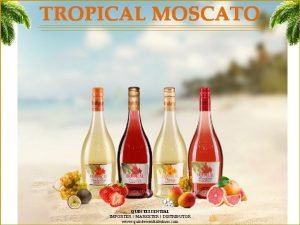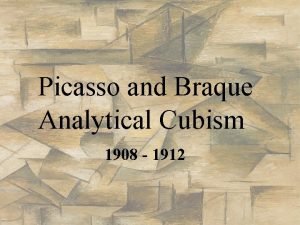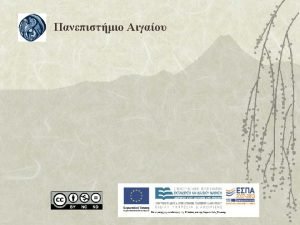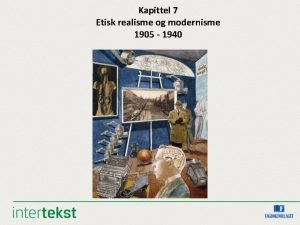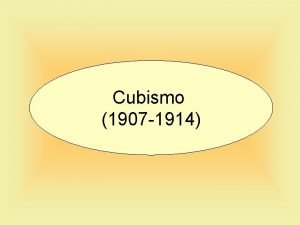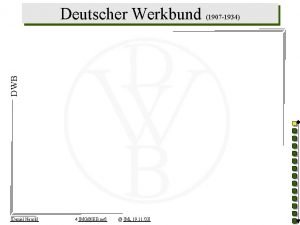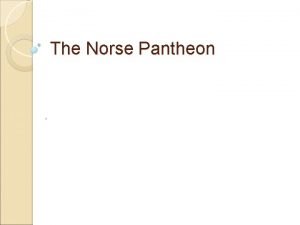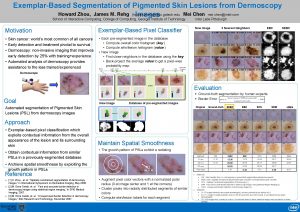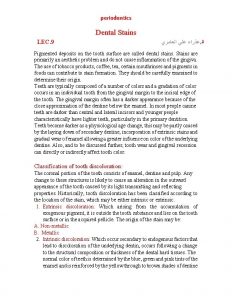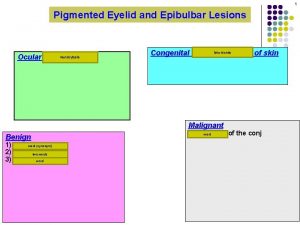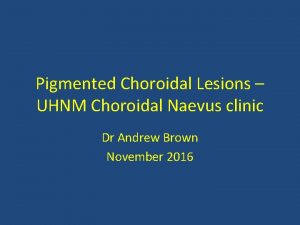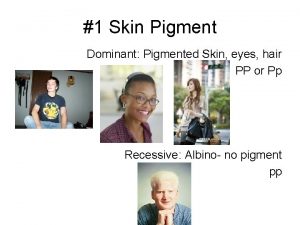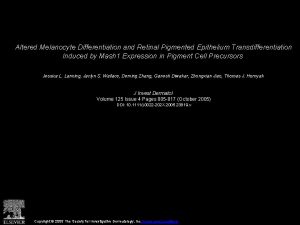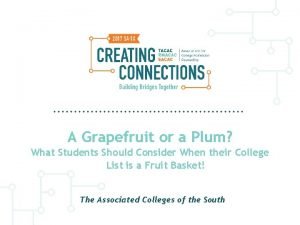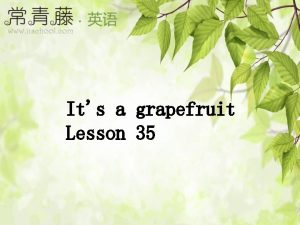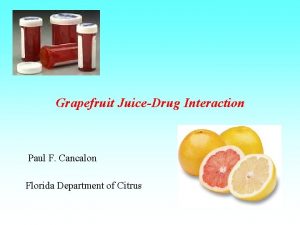Foster First pigmented grapefruit variety in 1907 Seedy




















- Slides: 20

Foster • First pigmented grapefruit variety in 1907. • Seedy • Limb sport of Duncan • Has lycopene in juice sac and in peel

Thompson or Pink Marsh • First seedless pigmented selection • Bud mutation of Marsh Seedless

Ruby Red, Red Blush, Henninger • Bud mutation of Thompson 1926 by Henninger at Mc. Allen, TX. • Apart from color it is identical to Marsh grapefruit

Ray Ruby • Uncertain origin discovered in 1970 in the property of R. Ray in Mission, TX. • Sweeter than Ruby with better internal color.

Star Ruby • Irradiating seed from Hudson by Hensz, TX. • Pigmented until the end of the season. • Slow growing and bush. growth habit

Flame • Seed collected from Henderson • Internal pigmentation is as good as Star Ruby

Rio Red • Originated as a seedling of Ruby Red • Irradiated and propagated on sour orange root stock • Released in 1984

Grapefruit varieties

C. indica - Indian wild orange • Unpalatable loose- skinned fruit. • Tanaka calls it Metacitrus • Wild state in northeastern India.

C. tachibana • Tachibana orange • Cold hardy, loose skinned fruit • ‘Shekwasha’ probably hybrid of this species • Very primitive type citrus native to Japan.

Papeda Subgenus • Inedible with acrid oil droplets in juice vesicles • Flowers and fruit small • Petioles long and broader than Eucitrus • C. ichangensis and C. latipes

C. ichangensis • Most hardy evergreen citrus • Monoembryonic and hybridizes readily with Citrus • ‘Yuzu’ and ‘Ichang’ lemons are hybrids.

C. latipes • Cold hardy like C. ichangensis – Thicker peel and more variable leaves.

C. micrantha • Small fruits • Native to Philippines • Includes ‘Microcarpa’ – smallest fruit and flowers in Citrus

C. clebica • Small thick peeled fruit • Native to Celebes • Thin-skinned ‘Southwikii’

C. macroptera • Leaves 10 -12 inches long • Fruit as large as sweet oranges • Another species is: – C. hystrix a very bumpy warty fruit.

The Avocado • Lauraceae family • Persea americana – Related to cinnamon, camphor, and sassafras trees – Cultivars in West Indian and Guatemalan races. – Thick peel, salt tolerant.

Persea drymifolia • Mexican race from highlands in Mexico. • Leaves posses aromatic odor anise or sassafras. • Thin fruit peel • Cold hardy

THE END

 Fig 19
Fig 19 Ophthalmic artery
Ophthalmic artery Pigmented fungiform papillae
Pigmented fungiform papillae light cured gel polish may be used on:
light cured gel polish may be used on: Felodapine
Felodapine Tropical grapefruit moscato
Tropical grapefruit moscato Pristiq grapefruit
Pristiq grapefruit Pablo picasso self portrait 1907 analysis
Pablo picasso self portrait 1907 analysis Rachel carson was born in 1907
Rachel carson was born in 1907 Panic of 1907 apush definition
Panic of 1907 apush definition Picasso le due sorelle
Picasso le due sorelle Etisk realisme og modernisme
Etisk realisme og modernisme Mexikanska 1907-54
Mexikanska 1907-54 Violino e brocca picasso
Violino e brocca picasso Picasso the old fisherman
Picasso the old fisherman Frida kahlo 1907 a 1954
Frida kahlo 1907 a 1954 United parcel service mission statement
United parcel service mission statement Deutscher werkbund 1907
Deutscher werkbund 1907 Megan larrinaga
Megan larrinaga Effects of multiple placements in foster care
Effects of multiple placements in foster care Baldur god
Baldur god




